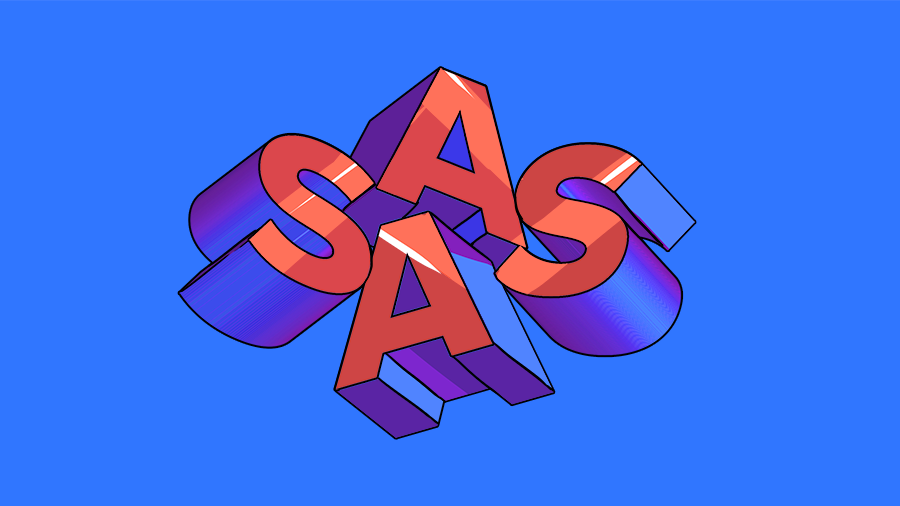Venture capitalists tend to be a sunny bunch. Ask about how their portfolio is doing, and they’ll tell you it’s doing well. Ask about a vertical, and they’ll say it’s interesting. Ask about a competitor, and if they are on the record they’ll say something neutral or kind. Ask a VC about the macro climate, and they’ll tell you a joke about if they could time the market, then by gosh, well, they’d do something else for a living. That sort of thing.
Subscribe to the Crunchbase Daily
So when a venture capitalist reached out wanting to talk about a cloud slowdown, I had to get on the phone and hear what they had to say. That this particular VC also mentioned revenue multiples before our chat made it all the more attractive a conversation, really.
Initially, I expected to just speak with the VC in question, Matt Holleran, a general partner at Cloud Apps Capital Partners, learn something, and leave it at that. But, after yammering with him a bit, I decided to bring a version of the conversation to you as it proved both useful and interesting to myself. (Cloud Apps Capital Partners is based in San Francisco, last raised $87 million in its second fund, and invests in early-stage cloud companies.)
So, I sent over a list of questions and let him compose answers at length, something that is nigh journalistic malpractice. Reporters nearly always value recorded and transcribed interviews over written chats as nearly everyone is more interesting, and authentic, when speaking out loud. Not to mention that such conversations brook less interference from third-parties. But in this case, we were discussing something technical so it felt like a good exception to the rule.
To make things fairer, I’ve weighed his lightly-edited and occasionally condensed responses with my notes from our first conversation (everything is fine) and have provided small commentary following some of his answers. Let’s go!
Questions, Answers
First, a few questions about the state of the cloud and SaaS market.
Crunchbase News: Could you detail your views regarding the slowing of growth among the most valuable public cloud companies, and what that might mean for SaaS and cloud startups?
Matt Holleran: The largest 25 public cloud companies by market capitalization had revenue growth of 27 percent in calendar 2018 and forecast 25 percent in 2019, 22 percent in 2020 and 20 percent in 2021. Part of the issue here is that these companies are larger, and adding incremental revenue at those growth rates gets more challenging. But we think reduction in the revenue growth forecasts is mainly due to executives at end-buying companies weighing the risk of recession in the US and abroad.
End customers are still and will still be buying new cloud business applications and growing their usage of existing applications because of the value proposition of the applications and the customer benefits of the recurring revenue model. But the size of new purchases may get smaller, and the rate of growth of existing applications may be slower than the last few years. Public and late-stage cloud companies will need to thoroughly qualify the opportunities in their pipelines and reframe their landing and expand strategies.
Cloud business application startups will need to be laser-focused on serving executives at buying companies with titles that have access to reasonable budgets and have the drive and authority to make new purchases and roll out meaningful applications. If solving a problem with a cloud business application is not a top-three priority for a target business executive title, it may not get done in a time of slowing economic growth and uncertainty. The first deployments may be smaller and take a little longer, but history has shown that great cloud business application companies have been started and gone through the foundational stages during major recessions and minor ones. Salesforce.com in 2000 and ServiceMax in 2008 are two good examples.
Alex’s Take: What was pretty interesting about Holleran’s take regarding cloud growth wasn’t that it was maximalist or negative, but that it split the difference. It’s not hard to find positive or negative cloud takes but to hear someone in the middle did stand out.
Crunchbase News: We discussed the size of new cloud/SaaS deployments and how they may shrink in time. What impact might that situation have on SaaS and cloud companies large and small?
Matt Holleran: We are already seeing the impact of smaller initial cloud purchases and deployments as enterprise customers become more cautious with their software spending in the face of global economic uncertainty.
In Q3, Workday said that sales of their flagship HR application to the world’s largest enterprises was slowing.
Public cloud companies will continue to sell to new enterprise customers, but the size of those initial deals will not be as large as they were in the recent past. Large public cloud companies like Workday and Salesforce.com will likely focus more on cross-selling new or acquired products to their existing customer base to grow revenue. Medium-sized cloud companies will likely focus on pipeline rationalization to focus on bringing on the most qualified new customers and proposing smaller initial new purchase prices to make the customer successful and plan for more future revenue versus upfront purchases.
Next, let’s talk about the most interesting thing in the world, cloud and SaaS revenue multiples.
Crunchbase News: We discussed rising SaaS and cloud company revenue multiples that seemed to peak over the summer; what drove that rise in valuations?
Matt Holleran: The average public cloud business application company forward revenue valuation multiple hit a record 12x this July. This run-up followed a significant revenue multiple compression and stock market correction in this market in December of 2018.
Early in 2019, the Fed lowered interest rates, which increased GDP growth and forecasts. As a result, executives at end-buying companies continued their purchases of cloud business applications all over the world. The lower rates also likely forced more capital to look for good sectors to invest in to generate returns resulting in an influx of capital with experience in the cloud business application business model and likely many new investors without prior experience.
The professional investors with experience in this market may have realized their substantial gains from the first half run-up by selling in Q3. The new investors may have conflated investing in good cloud companies with good recurring revenue models with good fundamental customer unit economics but losing money from investing in growth with unprofitable consumer companies and exited post the peak without significant gains or with losses.
We have seen this before, with one example being SuccessFactors. They spelled out their customer unit economics in their S-1 filing in 2007 and went public with good customer unit economics and large losses because they were investing in growth. In 2008, their stock dropped significantly and later regained a lot of the lost value prior to being acquired by SAP.
Public market investors’ understanding of the recurring revenue model, good customer unit economics and appreciating smart growth with losses has grown since Salesforce.com went public in the mid 2000s, but there may be many new investors who don’t have experience with the business model yet and may cause a flight to safety with profitable cloud companies but not necessarily a flight to quality.
Alex’s take: Years ago, an executive from a newly public company called me after their firm got beat up in earnings to explain how SaaS companies invest (i.e. lose money) in the short term to build long-term, high-margin recurring revenue. Happily, I was already read-in, but we do live in very different times today, at least in terms of the market’s familiarity with SaaS economics.
Crunchbase News: Later in our conversation, we discussed cloud and SaaS multiples returning to more historically normal levels. What levels would you consider to be normal?
Matt Holleran: At the peak this summer, companies on the BVP Nasdaq Emerging Cloud Index were trading at an average of 12x forward revenue. The historical norms are closer to 6-8x. The Index is trading at 10x today on average. 8x on average is probably a reasonable valuation multiple. With 22% average revenue growth for the Top 25 cloud companies by market capitalization expected in 2020, these companies could grow into their current average revenue multiples within a year.
Alex’s take: We’ve touched on this idea before. If SaaS stocks held their value flat for a few quarters, revenue multiples would compress as the companies continued to grow.
Now, let’s wrap with a short note on the IPO window and a sports analogy.
Crunchbase News: We discussed how the SaaS and cloud IPO window may be closed for all but the best companies, why is that?
Matt Holleran: I think buyers will take a wait and see approach, wondering if the cloud market still has farther to fall. Similarly, cloud companies and their boards will make the calculation that it might be better to stay on the sidelines and wait it out. The market leaders targeting large global markets, serving meaningful titles with great customer unit economics will be able to come public if they choose to or they will access private capital until they think the time is right.
Alex’s take: If your current valuation is too rich for public-market multiples to be palatable today, and your most-recent investor wants a return, your IPO is a ways out.
Crunchbase News: Finally, you remain bullish on the SaaS transformation that we’ve seen in the software over the past few decades. Stretching ourselves to a baseball analogy, what inning are we in today?
Matt Holleran: I’d say we’re still in the fourth inning. End customers realize the business value of deploying cloud applications and appreciate the recurring revenue business model as much as companies and their investors. The horizontal cloud application market is expanding globally across the small, medium, large, and enterprise markets. The vertical cloud business application market is also now a global market across many customer size segments. The global scale of these horizontal and vertical markets is creating the opportunity for more entrepreneurs to build global category leaders that can become public scale companies.
Illustration: Li-Anne Dias.

Stay up to date with recent funding rounds, acquisitions, and more with the Crunchbase Daily.


![Illustration of a magnet attracting various products. [Dom Guzman]](https://news.crunchbase.com/wp-content/uploads/mergers_and_acquisitions-470x352.jpg)


![Illustration of toast with $ toasted in. [Dom Guzman]](https://news.crunchbase.com/wp-content/uploads/Forecast-dollar-sign-300x168.jpg)


67.1K Followers